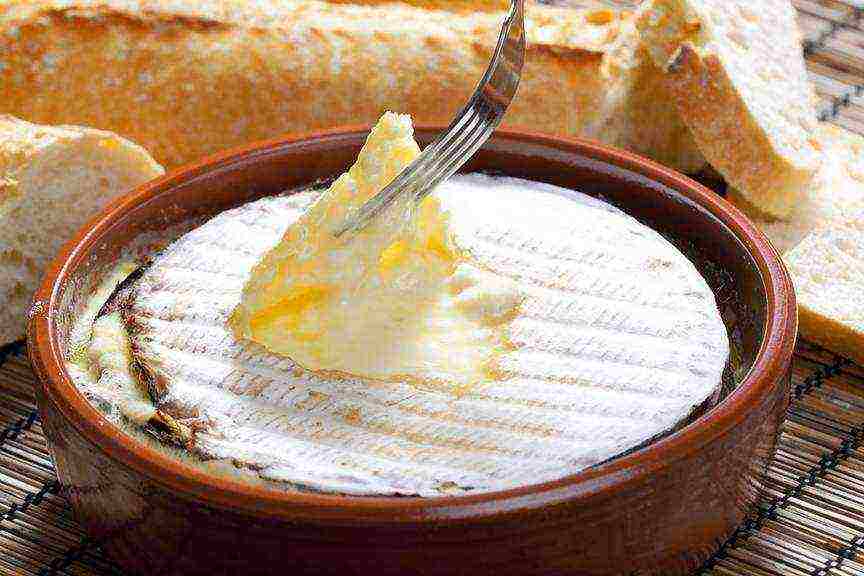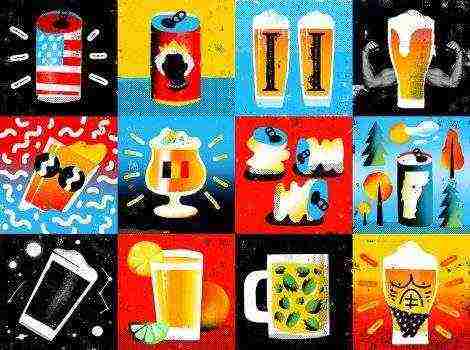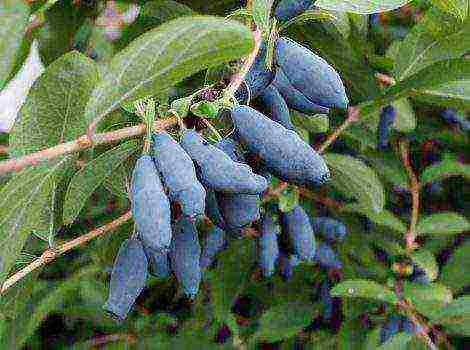Content
Cheeses are popular in varying degrees in all countries of the world. The variety of varieties of this fermented milk product is truly amazing. In France alone, and in this country there is a real cult of cheese, there are more than 500 varieties of cheese! Hard and soft, spicy and sweet, blue cheeses and cheeses with holes, they are all prepared differently, but there are some of the most popular and beloved varieties bought all over the world. We will talk about them today.
The best cheeses in the world
Of course, tastes differ. Someone adores cheese, and someone is completely indifferent to it, but among such a variety of varieties, everyone will surely find something that they really like. In addition, it is important to know with which wine or sauce it is better to combine this or that cheese. This product is the best appetizer for wine, the French know a lot about wines and cheeses, and their most popular appetizer for wine is just cheese platter.
1. Parmesan. Everyone has heard about this Italian cheese, but not everyone has tried or even seen it on the counter. It is the hardest cheese in the world and matures between 12 and 36 months. To obtain one kilogram of Parmesan, as much as 16 liters of milk are required, but thanks to the unique Italian technology, the output is a unique cheese with a deep aroma and hints of hazelnut. A finished head of cheese sometimes weighs up to 40 kilograms, so cheese is always sold in stores already packaged. When slicing, cheese very often crumbles - it is so hard.
2. Mozzarella.This Italian young cheese is also popular with many. Traditionally, this cheese is made from the milk of young buffaloes, but in recent years, examples from cow's milk have begun to appear. Mozzarella cheese is difficult to confuse with any other, as it is sold in the form of white cheese balls soaked in brine. This cheese is very delicate in taste, it is actively used in the preparation of salads, pizza, lasagna, etc.
3. Maskrapone.And again, the cheese comes from Italy. Mascarpone is an Italian cream cheese, more like cream or soft butter in appearance and consistency. It is this cheese that is often used in the preparation of desserts such as tiramisu. It is very greasy and is often smeared on sandwiches instead of butter.
4. Cambotsola.But this is already German cheese. It is a moldy cow cheese that combines features of two cheeses: Gorgonzola and Camembert. Cambotsola is a soft cheese with a distinctive aroma and rich taste.
5. Bree.One of the most famous and ancient French cheeses. This soft cow's milk cheese with a moldy crust once adorned the dining table of French kings, so Brie cheese was already appreciated in the Middle Ages. This cheese has always had many admirers and is really worth trying at least once in your life. Could it be love? Brie is a soft and very tasty cheese with a slight smell of ammonia. The older the Brie cheese, the spicier it is. Its aroma is quite specific, you need to get used to it.
6. Dorblu.German blue cheese, in other words - blue cheese. Contrary to the common misconception, not every blue cheese is Dorblu cheese, but in the vastness of the post-Soviet space, this mistake is very common.Dorblu is a dense and crumbly light cream cheese with bluish veins. It goes well with nuts, fruits and dry red wine.
7. Camembert.French soft fatty white cheese with a delicate mushroom taste and unsurpassed aroma. Made from cow's milk. It is difficult to confuse it with any other cheese, since on the outside it is covered with a white, moldy, fluffy crust, and on the inside it is soft. Today this cheese is very popular both in France and abroad.
8. Gorgonzola. A bittersweet blue Italian cheese, originally from Italy, ripens in 2-4 months. When this cheese is cut, green stripes are clearly visible on the cut. This cheese is often positioned as a dessert cheese. It goes well with red wines.
9. Roquefort.World famous blue French cheese, previously made exclusively from sheep's milk. Today it is also made from cow's milk and is highly valued all over the world, including in Russia. Top of this cheese is covered with a white shiny and slightly damp crust. Roquefort is distinguished by a bright taste of hazelnuts with a complex spicy aroma.
10. Tete de Moine.Semi-hard Swiss cheese made from cow's milk. Its name can be literally translated as "Monk's head". And the name contains the history of the origin of this cheese, because this cheese is a monastery. It was created 800 years ago in the Belle Monastery and even served as a monetary equivalent. The traditional recipe for making this amazing cheese has not changed for several centuries. It is also not customary to cut it, but only to scrape it off. Tête de Moine goes well with dry white wine.
11. Cabrales.Semi-hard Spanish blue cheese, made in unique conditions, namely in the caves around Cabrales. It goes well with young red wine.
12. Cheddar.Cheddar is a cheese loved by chefs from all over the world. This is a bright English hard cheese made from whole milk with a nutty, slightly spicy and sour taste.
13. Gruyeres. A hard yellow Swiss cheese with a pungent spicy aroma and nutty taste. Depending on the ripening time, Gruyère tastes differently. Young Gruyère is called “soft” and matures within 5 months, “semi-salty” Gruyère matures for 8 months, “salty” - 10 months, “premium” - more than a year, “old” - from 15 months.
14. Conte. The famous semi-hard French cheese, made exclusively from the milk of the following breeds of cows - Simmental and Montbéliard. This cheese ripens within 8-12 months. Conte cheese is distinguished by a pronounced sweetish nutty taste, but each cheese head has its own unique flavor. This is due to the different manufacturing conditions as well as the seasons. In total, there are 90 shades of Conte cheese, and 6 main tastes: fruit, milk, roasted, spicy, herbal and animal. This cheese is one of the most loved in France, it is served both as a separate dish at the end of a meal, and as an ingredient in other dishes. Conte cheese goes well with any wines.
15. Emmental. Semi-hard cheese originally from Switzerland. It is distinguished by a spicy, spicy-sweet taste, large cavities inside the head of cheese (holes). This cheese is freely produced in many countries of the world, so if you see a cheese with this name in a store, it does not mean that it comes from Switzerland.
Have you ever tried any cheese from the list above, and did you like it?
You may also be interested in
There are many such dishes and products in the world that are worth trying so as not to feel that life has been lived in vain. Cheese is a separate category for gourmets. There are countless cheeses, but it is generally accepted that 10 of the most delicious were chosen from them, which are produced in different parts of the world.

Mascarpone is an Italian cream cheese with a rich flavor similar to cream and yogurt. 100 g contains on average 453 Kcal.

Parmesan is hard, brittle, pungent in taste. It needs to be cut into the finest slices, and there is - with pears and walnuts. Parmesan is added to pasta, risotto, omelettes. 100 g contains an average of 392 Kcal.
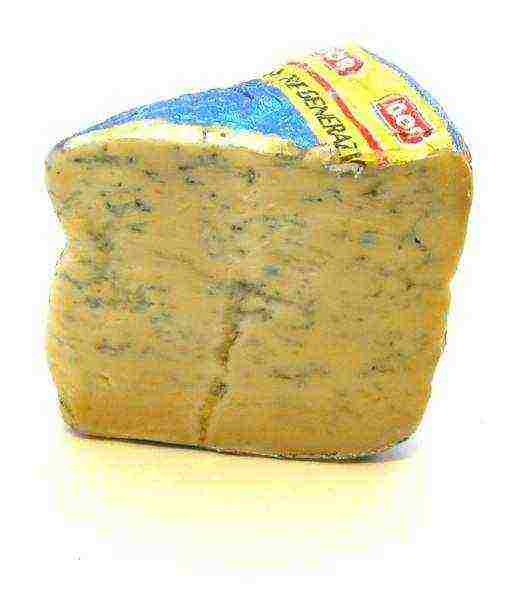
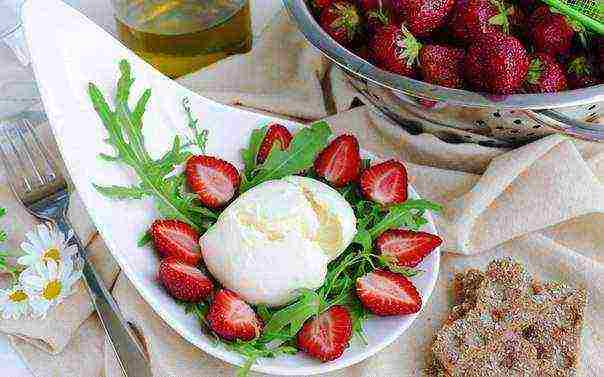
Mozzarella is a cheese made from buffalo milk. This cheese goes well with tomatoes, basil and olive oil. You can add some more black pepper. 100 g contains on average 250 Kcal.

Dor Blue is a German blue cheese. It is best eaten with nuts and grapes. If you eat several types of cheese at the same time, this variety is best left for last. 100 g contains an average of 354 Kcal.

Brie is an old French cheese. Cheese of the kings. Its taste, depending on the variety and timing of ripening, varies from mushroom to fruity. Fruit and brie are the best combination. 100 g contains on average about 330 Kcal.
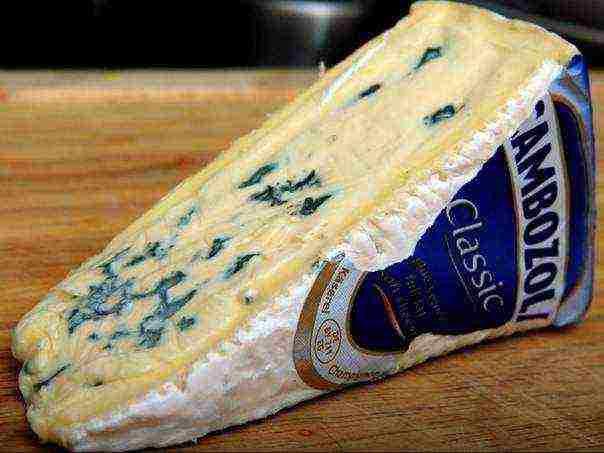
Cambozola is a German moldy cow cheese whose producers have managed to combine the features of French soft cheeses and Italian Gorgortsola. Vku is similar to Camembert, however, due to mold inclusions, it is more intense and sharp. It is better to serve fruit (for example, melon, grapes or pear) with this cheese. To fully understand the delicate taste of Cambazola cheese, you need to let its aroma fully unfold. To do this, put the cheese on a plate one hour before serving. 100 g contains on average 427 Kcal.
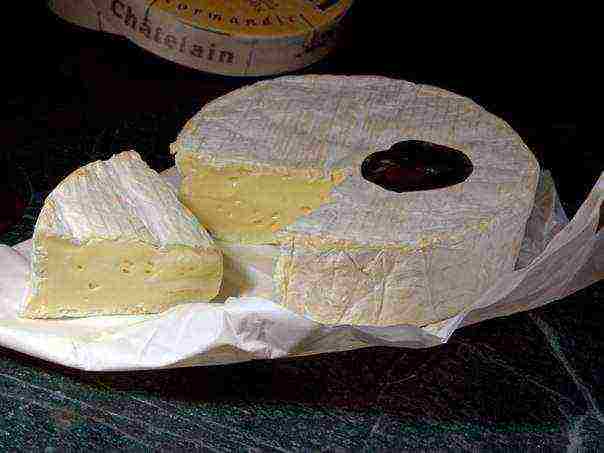
Camembert is a soft cheese made from cow's milk. Brie and Camembert are similar, but brie is slightly less greasy. An average of 100 g contains about 300 Kcal.

Tete de Moine - refers to the exclusive Swiss cheeses. Translated from French, its name means "monk's head". Tête de Moine is made from cow's milk, obtained exclusively during the summer months. Ripens more than three months. The finished cheese is homogeneous on the cut and has a dense texture. It has a very strong aroma and a pronounced pungent taste. Good with white wines. 100 g contains an average of 410 Kcal.

Roquefort is the famous French blue cheese. Roquefort goes well with wines: Cahors, Sauternes, Porto. 100 g contains an average of 335 Kcal.
Related links:
If you love cheese, then you have probably already tried many different varieties. What cheeses are the most demanded and popular? Find out and be sure to try what you haven't tried yet!

The most popular and delicious cheeses
We bring to your attention the top 10 most delicious cheeses in the world:
1. Mozzarella - delicious and delicate cheese originally from Italy. Traditionally, it was made from buffalo milk, but today the stores sell mozzarella from cow's milk, which is familiar to everyone. Such cheese looks like white balls of small diameter, soaked in a weak brine.
The product is soft and very delicate, with a pleasant taste. When preparing such cheese, milk is first fermented with a special thermophilic lactic acid culture. Then it coagulates thanks to rennet. After that, the whole composition is heated, and the whey is separated.
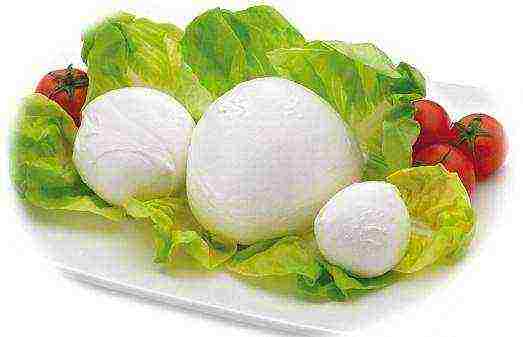
Then this mass is thoroughly and actively kneaded, periodically dipping it into hot water, until a homogeneous viscous mass is formed. Then balls, cubes, pigtails and much more are formed from the finished mass. The finished cheese is placed in a solution in which it is stored. The shelf life is short, so it's best to eat the Mozzarella as soon as possible. This cheese, by the way, can be added to salads.
2. Maskrapone. This cheese looks more like delicate creamy cottage cheese or even yogurt. It tastes incredibly delicate, slightly sweetish. The consistency of the product is more like a curd mass.
The homeland of such a product is Italy (in this country, incredibly tasty cheeses are generally made). To prepare Maskrapone, cream with a fat content of 25-30% is first heated in a water bath to about 80 degrees, then lemon juice, wine vinegar or tartaric acid are added to curdle milk protein.
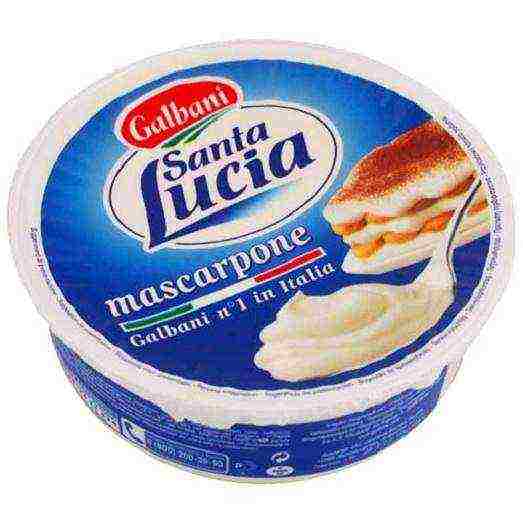
After that, the mass is heated, then cooled and placed in nets to remove serum.You can't call such cheese a dietary one, but it is incredibly tasty. Desserts are often made from it, the most popular of which is tiramisu.
3. Bree - a tender and soft cheese made from cow's milk, originally from France. Previously, it was available only to kings and the rich, but today everyone can taste it. The cheese is a flat cake with a thickness of 3 to 5-6 centimeters and a diameter of 30-60 centimeters.
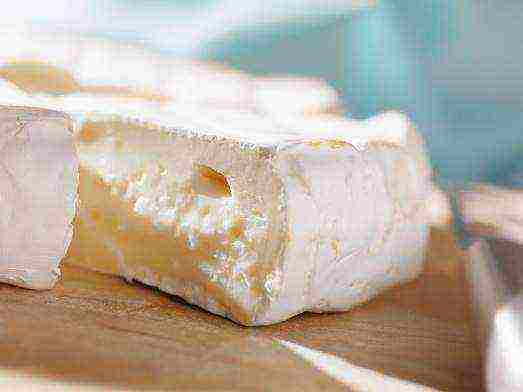
Such a cake is covered with a noble white mold that resembles white velvet (it is quite edible). The smell has an ammonia tint. The taste of this cheese can vary from fruity to pronounced mushroom (it all depends on the aging of the product). Brie is similar in consistency to processed cheese. It is best served not cold, but at room temperature. Brie is considered a versatile cheese as it pairs well with a variety of drinks and foods.
4. The list includes Parmesan... It is a hard cheese with a long maturation. Some believe that the recipe was presented to the world in 1200 by monks, since then nothing has changed. The cheese is so hard that it can crumble when cut. It tastes at the same time moderately spicy, salty, piquant and tender. Manufacturing technology is complex, and the maturation process is very long.
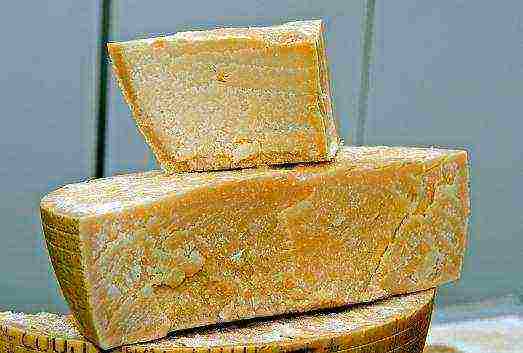
To obtain 1 kilogram of cheese, it usually takes about 16 liters of milk, and maturation can take from one to three years. The older the product, the more pronounced the hazelnut flavor.
In the homeland of cheese, which is Italy, there are special people who determine the maturity of Parmesan with silver hammers (they are called rumors). After a year of aging, the cheese is checked. Some are rejected, branded and removed (such a product may go on sale, but under a different name), and some are sent to mature for at least another year.
5. Cambozola... It is made by the best cheese makers, the homeland of the product is Germany. In general, this is a German blue cheese that combines the qualities of the Italian Gorgonzola cheese and the French Camembert (the name, by the way, appeared by combining the names of these two varieties).
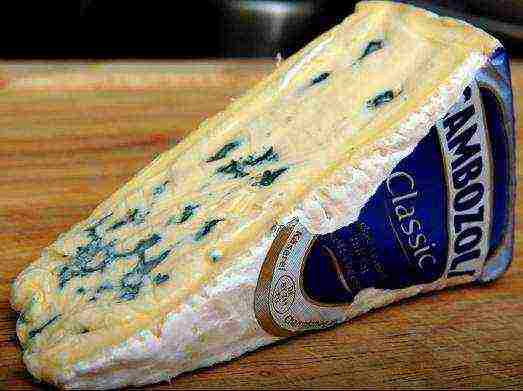
Such a product was patented by one of the German companies in the 70s of the last century. For the production of this cheese, a special specially prepared mold is used, and the softness and tenderness of the consistency is achieved by adding cream. The result is a delicate and tasty cheese with moderate pungency. It is best to eat such a product with fruit and after the disclosure of the aroma (for this, it is better to use it an hour after cutting).
6. Camembert - tender French cheese with a fluffy white mold crust. It tastes delicate and has mushroom notes. Camembert is prepared from whole milk. For coagulation, rennet is used.
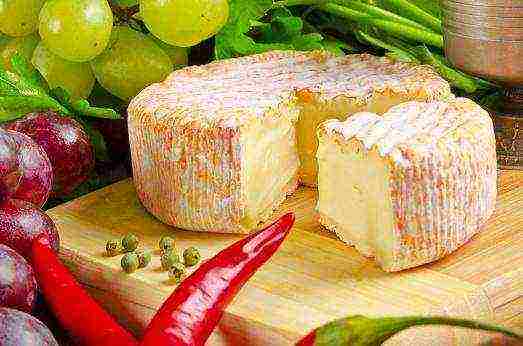
In the process of folding, the mass must be stirred periodically. Then the composition is moved into molds and dried in a special way (this requires the skills of experienced cheese makers), and then salted. Then the cheese will ripen under certain conditions until fully cooked.
7. Dor Blue - blue cheese with mold originating from Germany. For a long time, this cheese was practically the only one of its kind available on sale in some countries (including the former CIS countries). The recipe was developed especially for lovers of moderately spicy and savory cheeses.
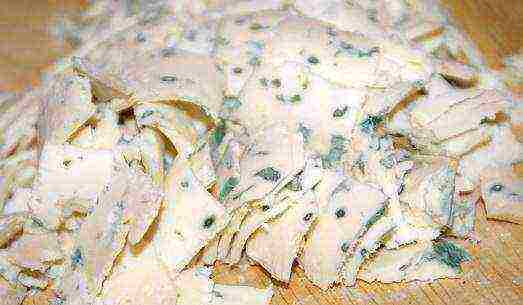
The composition itself and the peculiarities of preparation are still kept secret by cheese makers, but it is known that special molds are used, as well as cow's milk. This type of cheese is best combined with grapes and nuts. If there are several varieties on the table at once, then it is better to leave Dor Blue for last.
8. Gorgonzola... Guess where he comes from? That's right, from Italy. This variety is quite popular and has a tart, moderately spicy and piquant taste. This product belongs to blue blue cheeses.
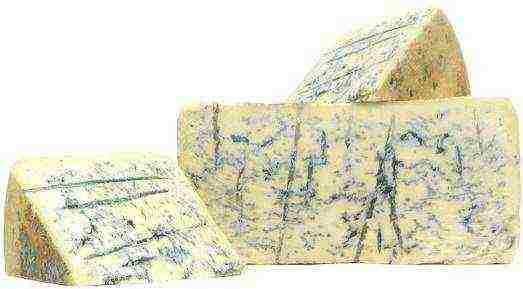
For production, cow's milk is used, to which penicillus fungi are added (they are injected with syringes) and special enzymes.Throughout the ripening process, which takes from 2 to 4 months, special metal rods remain in the cheese, providing access to the oxygen necessary for the life of the fungi.
9. Tete de Moine... The name of this cheese literally translates as "monk's head". And it was the monks who were the first to prepare this product. The homeland of cheese is Switzerland, it is exclusive and very expensive. For production, the freshest cow's milk of summer milk yield is used.
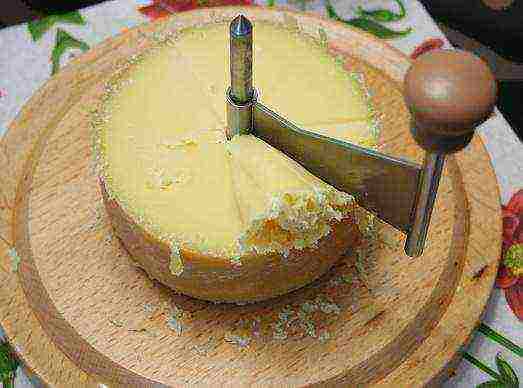
The cheese ripens for at least 70-80 days in wet cellars on spruce boards. During the ripening process, the heads are sprayed with a special saline solution with the addition of live bacteria. The result is a cheese with a yellow flesh, a dense texture and a brown crust.
10. Roquefort. This cheese belongs to blue varieties and is produced in France. Initially, this product was prepared from sheep's milk, but today cow's milk is also used. Milk is fermented, the mass is cut and laid out in shapes and salted. An important feature is maturation on oak shelves in a limestone grotto under conditions of sufficient ventilation.
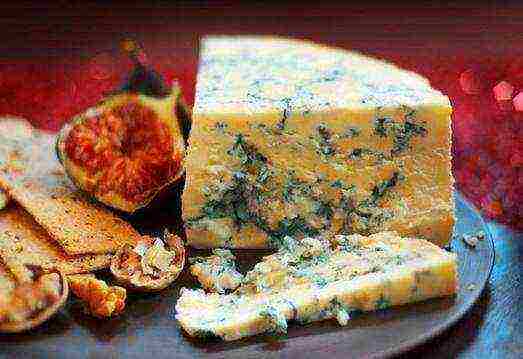
Here are the tastiest and best cheeses in the world. Which one will you try first?
Do you still find the only use for this product in the form of a morning sandwich? You are robbing yourself of your greatest gustatory pleasure. Cheese is the real king of world gastronomy. Rambler / Travel talks about cheese and recommends restaurants where you can taste it.
With pear mustard or tomato jam, nuts or spicy arugula ... Many are ready to "play along" with this noble product. But what suits the "French aristocrats" does not suit the "Swiss shepherds"! Both are worthy of being on your table. Moldy, pungent-smelling or delicate dairy products - put together your own cheese platter for your ultimate gastronomic journey.
Briefly
What are the cheeses:
- Uncooked pressed
- Boiled pressed
- Soft with a moldy crust
- Blue with mold
- Soft with washed edges
- Cheese with natural edges
- Fresh cheeses
- Processed cheeses
Best cheese restaurants:
- Androuet, Paris
- La Cloche a Fromage, Strasbourg
- Le chalet, Gruyeres, Switzerland
- La Bocca Buona, Bra, Italy
- Le Grand Vefour, Paris
- Al Sorriso, Soriso, Italy
- Restaurant Cheese's Art, Barcelona
Tips from the chef of resotran "Cheese" Mirko Dzago
There should be at least 8 cheeses on the cheese plate. An indispensable condition is a combination of cheeses of different origins (cheeses from the milk of a cow, goat, sheep must be present), soft (young) cheeses combined with hard ones.
But the presentation is individual. I serve different types of cheeses different products - black or white bread, crackers, honey and jam (green tomatoes and mint, cherries with black pepper, chestnut honey, acacia honey, truffle honey), dried fruits, nuts, raisins marinated in cognac or grappa, fresh fruits ...Winered, of course. But which one depends on the cheese - young cheese requires young wines to be accompanied, hard - more matured.
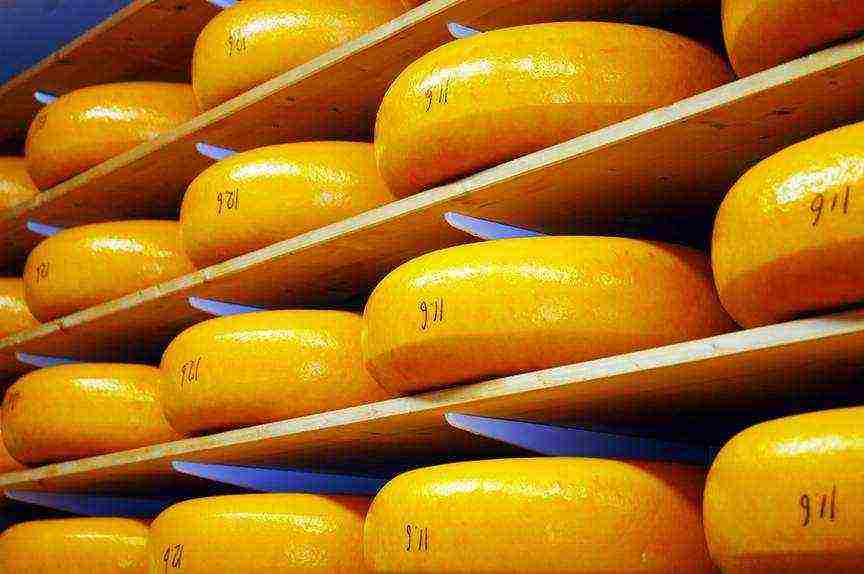
To classify cheeses, arrange them "on the shelves", equalize and bring them to a single standard is a thankless task. The most compromise is the French system, which divides pressed cheeses on: uncooked pressed, boiled pressed, fresh, soft with a moldy crust, soft with washed edges, blue cheeses with mold, with natural edges, processed cheeses.What makes the difference? The milk chosen for making cheese is cow, sheep, goat, and buffalo. Further - the starter culture, it can be rennet or lactic acid bacteria. The next stage is heating and pressing the curd mass. Variable components that affect the final product - heating temperature, ripening period, storage location (in brine, barrel, lime pit) and many other subtleties of production.
Interesting Cheese Facts:
- Cheese, like wine, is characterized by aging and place of production. The cheese receives a category D. O.P - in Italy, or A. O.C - in France.This special characteristic means authenticity, originality of origin, attachment to the locality.
- The French variety VIEUX BOULOGNE is the most fragrant cheese in the world. It is made from cow's milk and the rind is moistened with beer.
- In England, the National Cheese Skating Championship is held annually in May, one of the strangest competitions in the world. Competitors try to catch up with a head of cheese rolling down Cooper Hill.
Types of cheeses and their countries of origin
Uncooked pressed cheeses
Obtained by pressing the curd mass without preheating. Such raw cheese dries briefly in special molds, and then is processed in brine. Then it is placed on maturation. During aging, the cheese is salted from time to time, turned over and brushed to give the edges an even color.

The production of such cheeses is perfectly mastered Dutch: their "Gauda" and "Edamer" are known far beyond the borders of their native country. French people - lovers of smooth cheese "pulp" with a delicate taste - are ready to offer the less "promoted" "Reblochon". It is softer than its Dutch counterparts, and its taste is clearly manifested in walnut notes. And here ItalianPecorino made from sheep's milk is ready to compete with Gouda for the attention of gourmets. Its three varieties "Pecorino romano" - ripens 8-12 months and has a fruity flavor, "Pecorino sardo" - a Sardinian version with different ripening periods: young and sweet dolce, and well-ripened maturo with a spicy taste , “Pecorino toscano - ripens faster due to the small size of the cheese heads, satisfying any taste needs.
Boiled pressed cheeses
These are hard cheeses with a light crust, obtained by heating the mass, pressing and holding for a long time - from 6 months to several years. These cheeses are so popular that it is difficult to determine the clear leader. Indeed, it is difficult to say which is better: seasoned italian"Parmesan" (Parmigiano Reggiano) and "Grana Padano" (Grana Padano), with a dense core crumbling under the knife and small milk grains-crystals or French"Emmentaler" with a fruity-sweetish taste and a yellow body with large mouth-watering holes. But what about the famous SwissGruyère? Incredibly fragrant, from which the most delicious fondue is prepared!
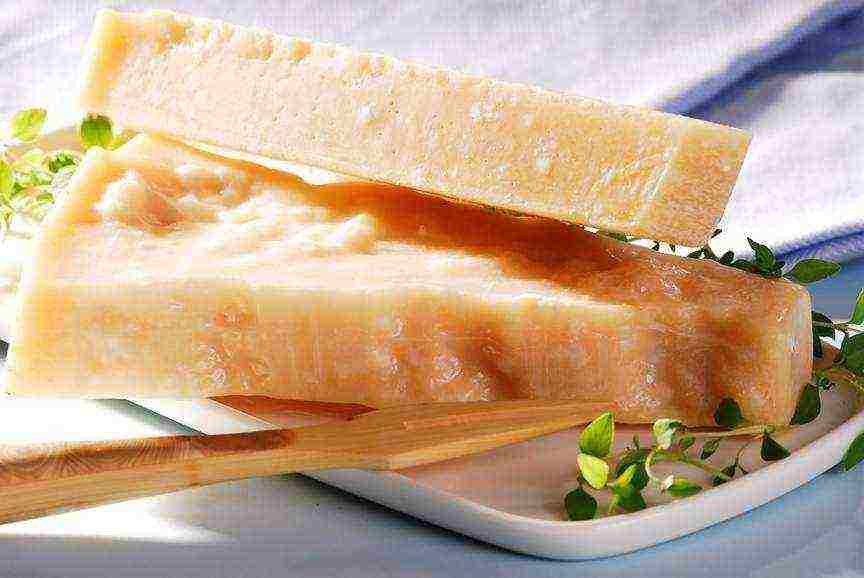
Soft with a moldy crust
They are obtained from fresh cheeses, which are formed, salted and sprayed with a solution of a special fungus, from which a white moldy rim appears on their surface. Such cheeses withstand no more than 8 weeks. Go to France for these cheeses. 50 km from Paris, one of the three varieties of "Brie" is prepared - "Brie de Coulomiers". And north of the city of love, in Normandy you will be offered to try Camembert. The noble origin and authentic taste of this cheese will be confirmed by special quality marks - a round wooden box and the only form of cheese production - a circle weighing 250 grams, 11 cm in diameter and 3 cm in height.
Blue with mold
The cheeses are not pressed during production, but are constantly turned over to ensure a better drainage of the whey. During ripening, they are rubbed with salt and pierced with long needles, injecting blue mold fungi. France is the birthplace of blue cheeses. Roquefort, Fourme d'Ambert, Bleu D'auvergne are produced here. But the Italians also try to play on the “foreign field”: their “Gorgonzola” is only slightly inferior to “Roquefort” in taste nuances; and the Danes: Danablue is simpler and cheaper.
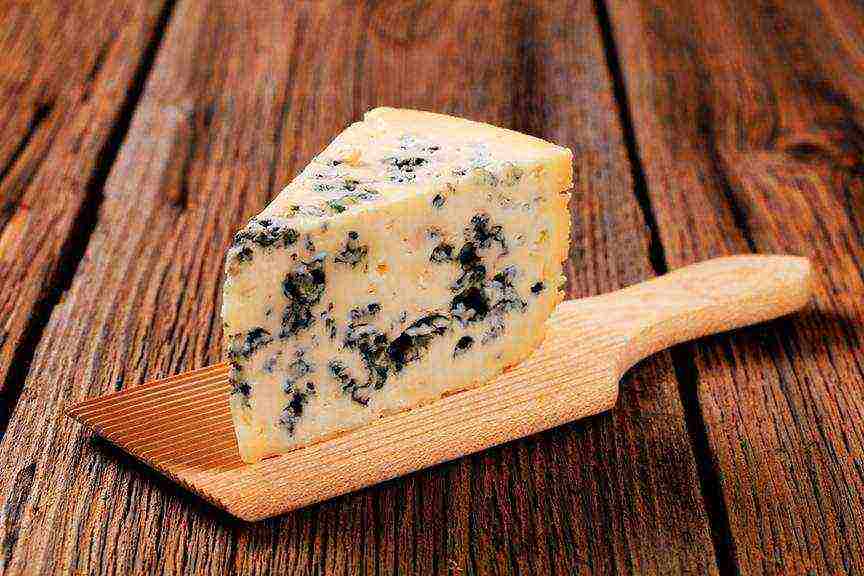
Soft with washed edges
Such cheeses are also called red-moldy or spicy (for their sometimes pungent aroma). During ripening, they are washed with salt water, which eliminates the formation of common mold and creates conditions for the formation of red mold. The homeland of such cheeses is French Alsace, from here come "Livarot", "Munster", "Marual".Such cheese is also produced in Germany, the most famous variety is "Limburgsky".
Cheese with natural edges
They are made exclusively from goat and sheep milk. When ripe, the edges of the curd mass are slightly wrinkled and covered with a bluish-gray mold. Some cheeses are pressed, others remain fresh. Thus, the French cheese Sainte-Maure-de-touraine with white pulp and black crust has a tart taste, while Chabichou du Poitou is pasty, tender with a soft crust has a delicate aroma and taste of meadow herbs
Fresh cheeses
They are easy to manufacture and have the usual milky taste without unnecessary shades and nuances. But this does not deprive them of their honorable place in world gastronomy. They are not pressed, not salted, only squeezed and kept for a short time, allowing excess moisture to evaporate. Mozzarella, Ricotta are Italian classics, Philadelphia is an American invention.
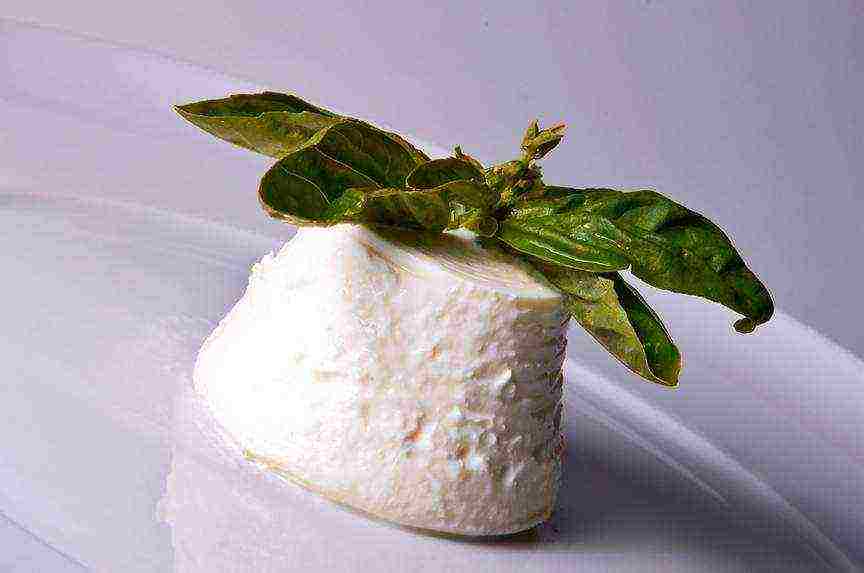
Processed cheeses
A secondary product, as a rule, they are prepared from the remains of cheese production by melting with the addition of salt - sodium phosphate. The gastronomic world allows them only in soups and then, as an exception, rather than a rule.
Homer and Aristotle were among the earliest praises of cheese splendor. But he gained fame all over the world thanks to the ancient Arab nomadic tribes. Today there are more than 1000 varieties of cheese in the world, while France, Italy and Switzerland are considered the main cheese powers. Germany and Holland keep up with them.
Where to taste the cheeses:
Androuet, Paris
Today there are more than a dozen similar cheese shops with a bar in France, England and Sweden.
The owners of the establishment are real promoters of the cheese culture. There are at least 50 varieties on the shelves of this store - from the famous French Brie, Camembert, Reblochon, Italian Gorgonzola and Mozzarella, to more rare English and Swiss varieties. Cheese can be tasted in a special buffet, where it is laid out in pieces like a cheese plate and “seasoned” with fragrant honey and jams. And you can ask the variety you like to "wrap it with you."

La Cloche a Fromage, Strasbourg
This is the only restaurant in the world that serves nothing but cheese. The restaurant is located just a few blocks from Strasbourg's main cathedral. Cheese aroma is felt even on the way to the establishment. The menu is every cheese lover's dream. More than 70 varieties of cheese have been collected under the cover of the main restaurant book.
You can order a cheese plate with 10 - 14 types of cheese - from fresh to pressed. Or try the legendary Swiss roclette, which will be served along with a special burner: melt the cheese and immediately spread the viscous mass on slices of boiled potatoes. Incredibly delicious!
Le chalet, Gruyeres, Switzerland
The Swiss town of Gruyeres is the birthplace of the cheese of the same name. So it's best to try this aromatic cheese in one of the local restaurants. If you walk along the main street towards the city castle, you will find Le chalet in the last building on the left side. In the cozy restaurant you can taste one of the best fondues in Switzerland. However, instead of the usual bread, cut into small pieces, they serve small potatoes in their "uniform". It is especially tasty to dip it into cheese mass.
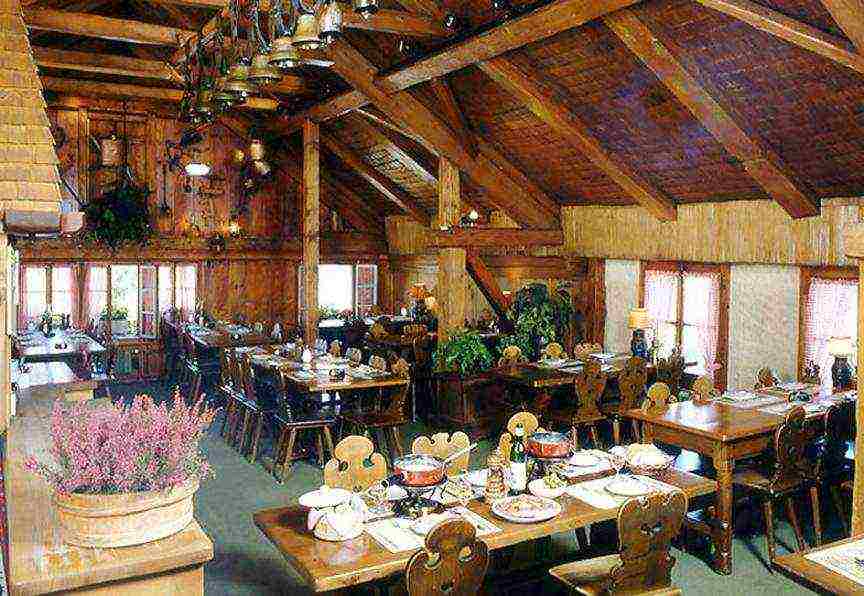
La Bocca Buona, Bra, Italy
Piedmont
in the guide
Piedmont is the center of Italy's cheese making. There is a thousand-year tradition of milk processing here, and many small producers have kept the secrets of making local cheeses.Therefore, it is best to taste local specialties in one of the restaurants in the main city of this region - Bra.

The cuisine of La Bocca Buona can compete with the “haute” cuisine of Michelin restaurants in everything except prices, here they are humane. Cheese dishes on the menu were given two pages. Start with aromatic salads flavored with cheese and truffle oil, and for dessert order a cheese plate with local varieties - Bra, Castelmagno, Murazzano.
Le Grand Vefour, Paris
Located on the Rue Beaujolais in the Palais-Royal in Paris, Le Grand Vefour is famous for more than its menu of cheeses. Many famous personalities of France have visited the walls of this historical place. For example, Victor Hugo came here for a plate of delicious green bean puree soup, which is still on the menu today. As far as cheese is concerned, Parisians consider the cheese plate to be one of the best. The cheeses are the freshest, and the accompaniment - you can't imagine more ideal - onion confiture or tomato jam.

Al Sorriso, Soriso, Italy
It is best to discover the taste of real "Gorgonzola" in the homeland of this cheese - in Novara (Italy). “Even if there were no attractions in Novara, it would still be worth coming here - because of the Gorgonzola,” say the locals. It can be sweet "Gorgonzola" (ripens for two months, has a mild taste) or piquant (it takes three months to mature). "
If you want to feel the authenticity of local cuisine while enjoying signature gastronomic delights, head to Al Sorriso, a restaurant with three Michelin stars. The boss of the kitchen is Louise Marelli and Angelo Valazza. This couple creates wonders with the purest local ingredients: Alpine cheeses, ham and bacon from Val Vigezzo, aromatic herbs and spices.
Restaurant Cheese's Art, Barcelona
As the name suggests, the restaurant is dedicated to cheese and the art of consuming it. The Sangra family, who owns a restaurant in Barcelona, started their cheese business over 30 years ago. The restaurant has a warm, homely atmosphere, and cheese, of course, dominates the menu. Fondue, raclette, cheese plate in several variations ... as well as salads with various fillings, of which cheese remains indispensable. The kitchen is simple but solid and the prices are more than reasonable.
